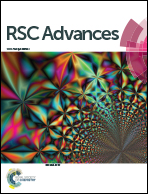Valence variation of phase-pure M1 MoVNbTe oxide by plasma treatment for improved catalytic performance in oxidative dehydrogenation of ethane
Abstract
This work presents a new method of catalyst surface modification by using oxygen plasma to change the oxidation state of active sites in metal oxide catalysts. The concentration of V5+ ions on phase-pure M1 MoVNbTeOx catalyst is the key factor of catalytic performance in the oxidative dehydrogenation of ethane (ODHE) process. Based on this variable valence system, oxygen plasma is used to increase the vanadium valence state in consideration of its strong oxidization properties at low temperature. As expected, the oxygen plasma can efficiently increase the V5+/V4+ ratio on the catalyst surface without influencing the M1 phase structure. The catalyst evaluation results confirm that the oxidized catalysts give better performance in the ODHE process, e.g., a 9% increase of ethane conversion using the catalyst treated by 50% O2 plasma compared to the M1 phase catalyst without any post-treatment under the conditions of 673 K and the contact time of 20.7 gcat h molC2H6−1. As a gas–solid method, plasma treatment provides an efficient and mild way for catalyst preparation and modification. It is anticipated that this novel approach can be extended to treat a rich variety of redox catalysts.


 Please wait while we load your content...
Please wait while we load your content...